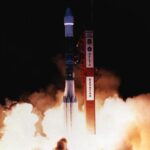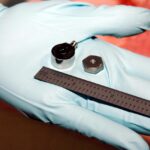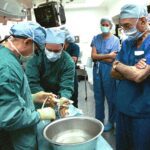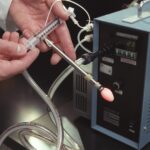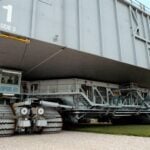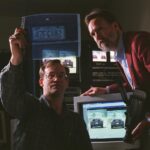Space Technology Hall of Fame Inductees
The Space Technology Hall of Fame® comprises many extraordinary innovations — all derived from or significantly improved by space research or exploration. To nominate a technology, please visit our Nominate a Technology page to learn more about the Space Technology Hall of Fame® selection criteria.
Search Filters:
The TEMPUR story begins in the late 1960s when NASA scientists and engineers were asked to develop a material to absorb the G-force pressure astronauts endure during lift-off and landing. They invented a unique formulation of viscoelastic material, with both high-energy absorption and soft, pressure-relieving properties. In the early 1970s, our Swedish founders – Mikael…
Read MoreThe Global Positioning System (GPS) program began in 1973 when the U.S. military services and the Defense Mapping Agency combined resources to develop a highly accurate space-based navigation system. Functions not originally envisioned, such as communications system synchronization, search and rescue, precision approaches and landings, and GPS-assisted munitions, have come into common usage within the…
Read MoreAbout one decade ago, the Ballistic Missile Defense Organization (BMDO), then the Strategic Defense Initiative Organization, funded Silicon Designs to develop radiation-hardened accelerometers for kinetic energy vehicles to measure the change in velocity resulting from rocket motor firings that occur while changing trajectory. Smaller than a person’s thumbnail, these devices have very low power requirements…
Read MoreProper heart rhythms can often be reestablished by the sudden discharge of stored energy in this pulsed-power device which uses a capacitor originally developed for space-based lasers and accelerators. In the mid-1980’s, the Ballistic Missile Defense Organization (BMDO) funded a company now named Maxwell Technologies to develop a high energy-density thin-film capacitor – a device…
Read MoreBased on turbine technology developed for use in liquid propellant rocket engines, this specially designed small, lightweight, high speed turbine pumps blood without damage to the delicate, individual blood cells. A joint effort beginning in 1988 between NASA and a group of doctors headed by Dr. Michael DeBakey led to development of this Ventricular Assist…
Read MoreSince the 1970’s when charged coupled devices (CCD’s) were first developed, camera and video companies have been seeking to improve the technology. CCD’s provide good image quality, but they are expensive, power hungry, and with the required accessory chips, bulky. Recognizing the shortcomings of CCD technology, and with the continuing need for lightweight imaging systems…
Read MoreOne of NASA’s life science research goals is to better understand plant growth in microgravity. NASA found that it was difficult to use traditional plant growth light sources in space because they require considerable power and turn much of it into heat. This means that the experimental system has to have good controls to eliminate…
Read MoreA few decades ago visionaries at Hughes Electronics Corporation believed that it should be possible to produce a digitally-based, direct broadcast satellite (DBS) that would provide services directly to home consumers. This idea was based upon a perceived growing market and the technology and know-how the corporation had from developing satellites for military and telecommunications…
Read MoreIn the mid 1990s NASA discovered an environmental problem with the material that was being used to lubricate the massive track system on the shuttle mobile launch transporter. Not surprisingly the lubricant requirements are rather extraordinary for this transporter. The product has to provide long-lasting and complete lubrication for a moving set of tracks that…
Read MoreDr. David Hathaway and Paul Meyer of the NASA Marshall Space Flight Center have worked on several criminal cases with the police and the Federal Bureau of Investigation (FBI). Hathaway, a solar physicist is usually busy studying images of violent explosions on the Sun and Meyer, an atmospheric scientist, examines hazardous weather conditions on Earth.…
Read More

